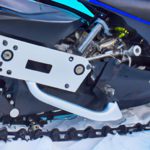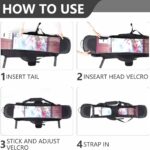Picture this: you’re halfway through a great day on the slopes when you see it, a gnarly chip on your snowboard. Don’t panic! Snowboard maintenance might appear daunting, but you’re about to get a step-by-step guide on how to rectify a snowboard chip yourself. It’s time to throw on your tool belt, grab some epoxy, and get ready to learn some first aid for your snowboard. This primer offers you everything required to fix that chip and get you back out there carving up the powder in no time.
Understanding Snowboard Chips
What is a snowboard chip?
Let’s start at the beginning. What exactly is a snowboard chip? Well, it’s pretty much what it sounds like – a small piece of your snowboard that has broken off or been damaged in some way. This usually happens when you’re out on the slopes, shredding through rough terrain or perhaps having a minor mishap when performing tricks. It’s an unfortunate part of the sport but something that can be addressed with appropriate knowledge and care.
Common causes of snowboard chips
Snowboard chips can be caused by a variety of things. Some of the most common include the impact from hard objects like rocks, branches or ice; poorly executed landings that put undue pressure on the base; or constant wear and tear over time. Sometimes, it could also be caused by improper storage or transportation. Knowing these causes can help you minimize those risks and better protect your board.
Impact of a chip on the snowboard’s performance
Now, you might be wondering if a minor chip on your snowboard is really something to be worried about. The sad truth is, yes. A chip, depending on its location and size, can indeed impact your snowboard’s performance greatly. It can slow you down, affect your control during turns, or, in worst case scenarios, cause your board to break apart in the middle of a downhill run. Obviously, that’s not something you would want.
Inspecting the Snowboard
Checking the snowboard’s surface
Now onto the next important step, inspecting your snowboard. Carefully glance over the base of your snowboard. Look for any noticeable chips, gouges, or cracks. Pay extra attention to the edges as they tend to take the brunt of the impact and hence, are more likely to be damaged.
Identifying the size of the chip
As you spot the chips on your board, make sure to take note of the size of these damages. Small superficial chips can generally be fixed easily, while larger chips, especially those reaching the core, may require a more involved repair job or professional intervention.
Locating other potential damages
While you’re at it, don’t stop at just checking for chips. Look for other signs of damage as well, like delaminations or fissures along the edges, as they could spell more trouble for your board.
Gathering Necessary Repair Materials
Choosing the right epoxy
Now that you’ve identified the chip, let’s move onto gathering the necessary repair materials. The most important of which is the right epoxy. This adhesive resin will essentially be the material that makes up for the chipped off part of your snowboard.
Necessary tools for chip repair
To fix a chip, you’ll also need some basic tools. These include a scraper to clean out the chipped area, a heat source like a blow dryer to dry out the spot, a mixing stick and container for the epoxy, and some sandpaper to smooth out the fixed area.
Protective gear
Because you’ll be dealing with chemicals, don’t forget to gear up appropriately. Gloves, masks, and working in a well-ventilated area are all recommended.
Preparing the Snowboard for Repair
Cleaning the chip properly
The first step in the repair process is to clean the area thoroughly. Use the scraper to remove any dirt or loose bits from the chip. If need be, you can use a mild cleaner to get rid of any tough grime.
Drying the snowboard before repair
Once clean, you’ll want to ensure the spot is dry. Any moisture can affect how well the epoxy adheres. Use a blow-dryer, or simply leave it to dry in a warm room.
Smoothing the chip area
Finally, just before you apply the epoxy, take the sandpaper and rough up the chipped area. This provides a better surface for the epoxy to grip.
Mixing the Epoxy
Choosing the correct epoxy
Choosing the right epoxy is really important. A flexible epoxy is usually a good choice as they match the characteristics of the snowboard’s material. But, do check the product specifications to ensure it’s right for your board.
Proper mixture for snowboard repair
Follow the epoxy instructions for the proper mixture. Often, it’s a simple 1:1 mix, but it’s crucial to get this right for the repair to work as intended.
Safety considerations when handling epoxy
Remember, when working with chemicals like epoxy, safety should be a top priority. Always work in a well-ventilated area, wear protective gear and if you feel unwell at any point, take a breather and get some fresh air.
Applying the Epoxy
Ensuring a smooth application
After mixing, apply the epoxy smoothly into the chipped area, taking care to press it firmly to ensure a good bond to the board. Don’t worry if you apply too much as it can be sanded down later.
Things to avoid while applying epoxy
Avoid getting epoxy on the areas of the board that aren’t damaged. It can affect the performance of your board. So, work slowly and meticulously.
Setting the epoxy properly
Once applied, leave the epoxy to set. If necessary, you can use clamps to ensure a tight bond, but ensure not to overtighten as it can squeeze all the epoxy out.
Allowing the Board to Dry
Ideal drying times
The epoxy drying time can vary depending on the product, so refer to your epoxy instructions. As a general rule of thumb, leaving it overnight often ensures a good set.
Correct room temperatures for drying
Room temperature plays a big role in drying. Generally, a warmer room speeds up the curing process, but a cool room is more than capable for the job, it might just take a bit longer.
Avoidance of disturbances during the curing process
Ensure that the board is left undisturbed while the epoxy is drying. Moving it or touching the repair part can affect the bonding process.
Finishing Touches
How to check if the epoxy has set
After ample drying time, it’s time to check if the epoxy has set. It should be firm to touch and there should be no sticky residue left.
Sanding the repair to make it smooth
If the epoxy has set, the next step is to sand down any excess to create a smooth surface. This will avoid any disturbances in your ride caused by uneven surfaces.
How to finish the chip repair perfectly
To finish off the repair, you can apply some base wax and scrape it smooth. This gives your board a slick surface and helps protect the epoxy repair.
After Repair Maintenance
Regular snowboard inspections
After the repair, it’s essential to regularly inspect your board for any potential issues, especially before and after each trip. Frequent checks will assure that small damages don’t turn into big problems.
How to properly store your snowboard
Proper storage of your snowboard is a crucial part in maintenance. Store it in a cool, dry place out of direct sunlight. If you’re storing it over the offseason, a wax coat can help protect the base.
Common snowboard maintenance tasks
Beyond chip repairs, there are few other simple maintenance tasks that you can do to extend your board’s longevity. Waxing the base, tightening the bindings and edge tuning are few amongst them.
Preventing Future Chips
Tips to avoid chipping your snowboard
Preventing chips can go a long way in preserving your snowboard. Avoid riding over rocky terrain, stow your board carefully, and consider using a board bag for transportation.
The role of proper snowboarding techniques in preventing chips
Believe it or not, your own snowboarding technique can play a big role in chip prevention. Staying in control and making smooth, precise movements can lessen the impact on your board.
Choosing the right snowboard for your skill level and terrain
Lastly, choosing the right board for your skill level and the terrain you frequent is key. An appropriate board can handle the strains you put it through, reducing the risk for chips and other damages.
There you have it, as a snowboarder, tackling a chip repair might seem intimidating, but it can be a rather simple task with the proper knowledge, patience and eye for details. So next time you spot a chip, don’t fret, you know what to do!
- What Snowboard Bindings Should I Get? - January 23, 2024
- What Size Screws For Snowboard Bindings? - January 23, 2024
- How To Snowmobile On Water? - January 23, 2024










